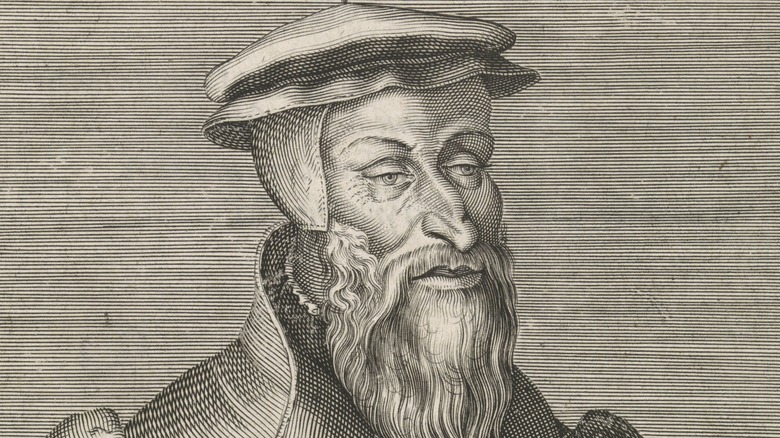Who Divided The Bible Into Chapters And Verses?
For centuries, Christians have been making use of a helpful study aid when reading the Bible — possibly without even realizing it. Specifically, they're aided by the division of the text into chapters and verses, which didn't happen until centuries after the original text was written, according to Christian Today. The originals were all written without even so much as chapters, meaning that someone who wanted to study a lengthy book like Genesis would have to come up with starting and stopping places in the narrative on their own.
Over the years, scholars made several attempts to divvy up the narrative into manageable chunks, but none of them stuck — that is, until the invention of the printing press. Once publication of Bibles moved from tedious hand copying to mass production, the process became somewhat standardized, and one particular printer gets the credit for the chapter-and-verse divisions we have today.
Parisian printer Robert Estienne gets most of the credit
We have two religions, two scholars, and one world-changing invention to thank for the modern-day division of chapters and verses in the Bible. In 1382, a Christian scholar by the name of Stephen Langton divided up the books of both testaments into chapters, according to The Catholic Commentator. Then, in 1448, a Jewish scholar by the name of Nathan divided up the Old Testament into verses.
Both men got into the game at just the right time: In 1450, Gutenberg invented the printing press, and mass-producing Bibles became a thing. Enter Parisian printer Robert Estienne in 1555. As Got Questions notes, he went more or less with Nathan's verse divisions for the Old Testament. But for the New Testament, he created his own out of whole cloth, while sticking to Langton's chapter divisions. Indeed, legend has it that Estienne's New Testament job was rushed as he rode from Paris to Lyon to meet a deadline, per Christian Today. Nevertheless, his divisions of the text became the standard for printed Bibles and remain in use to this day, five centuries later.

